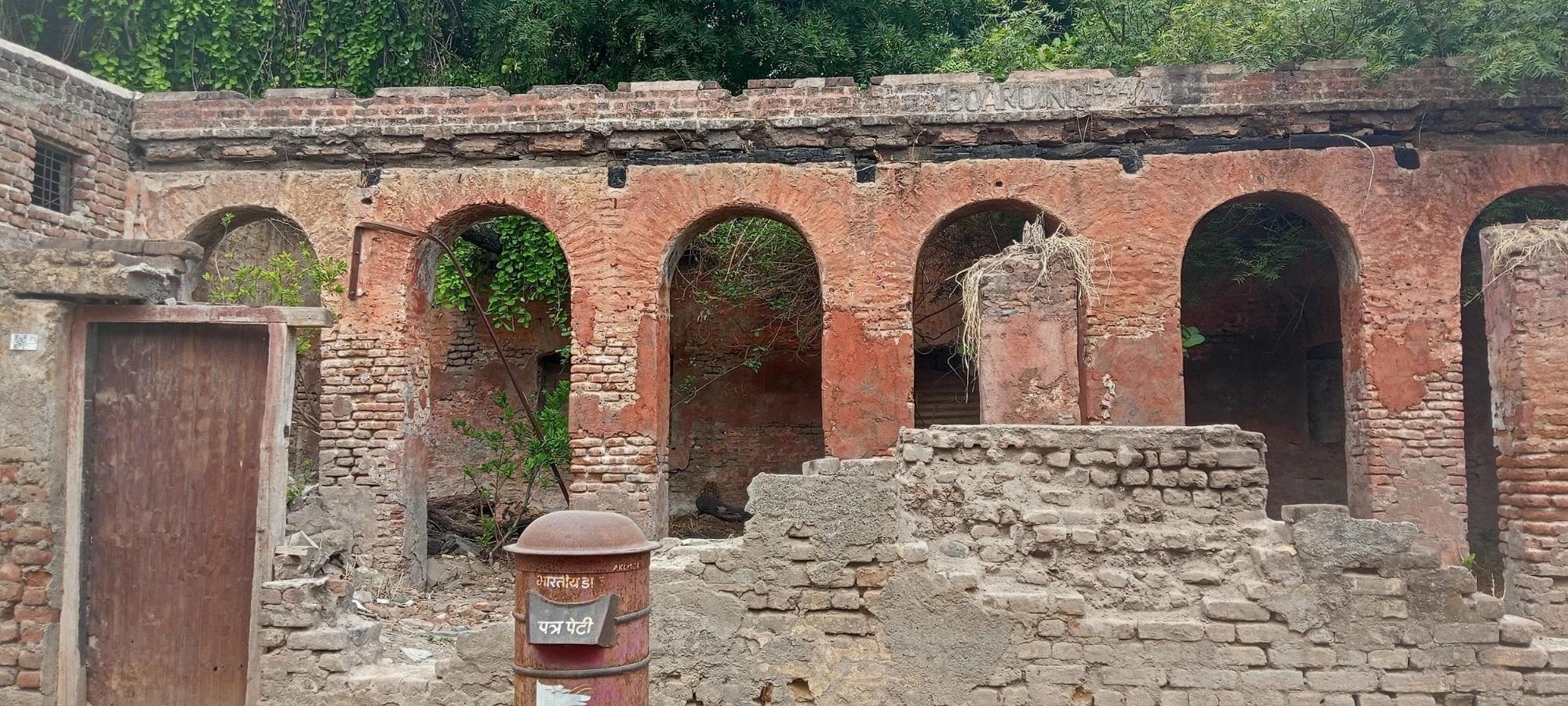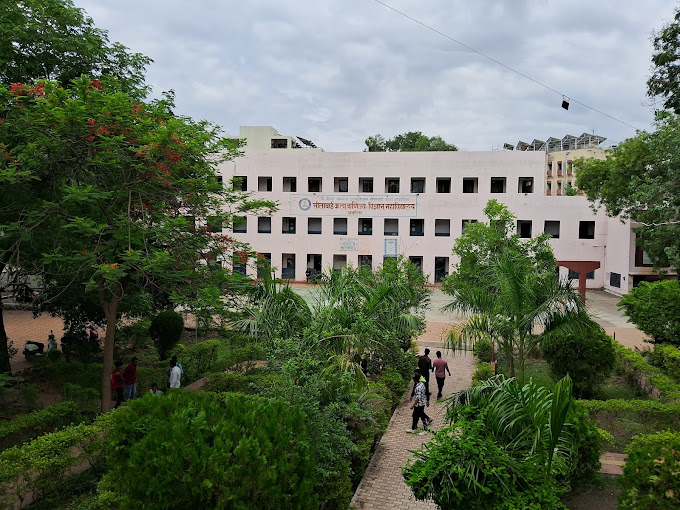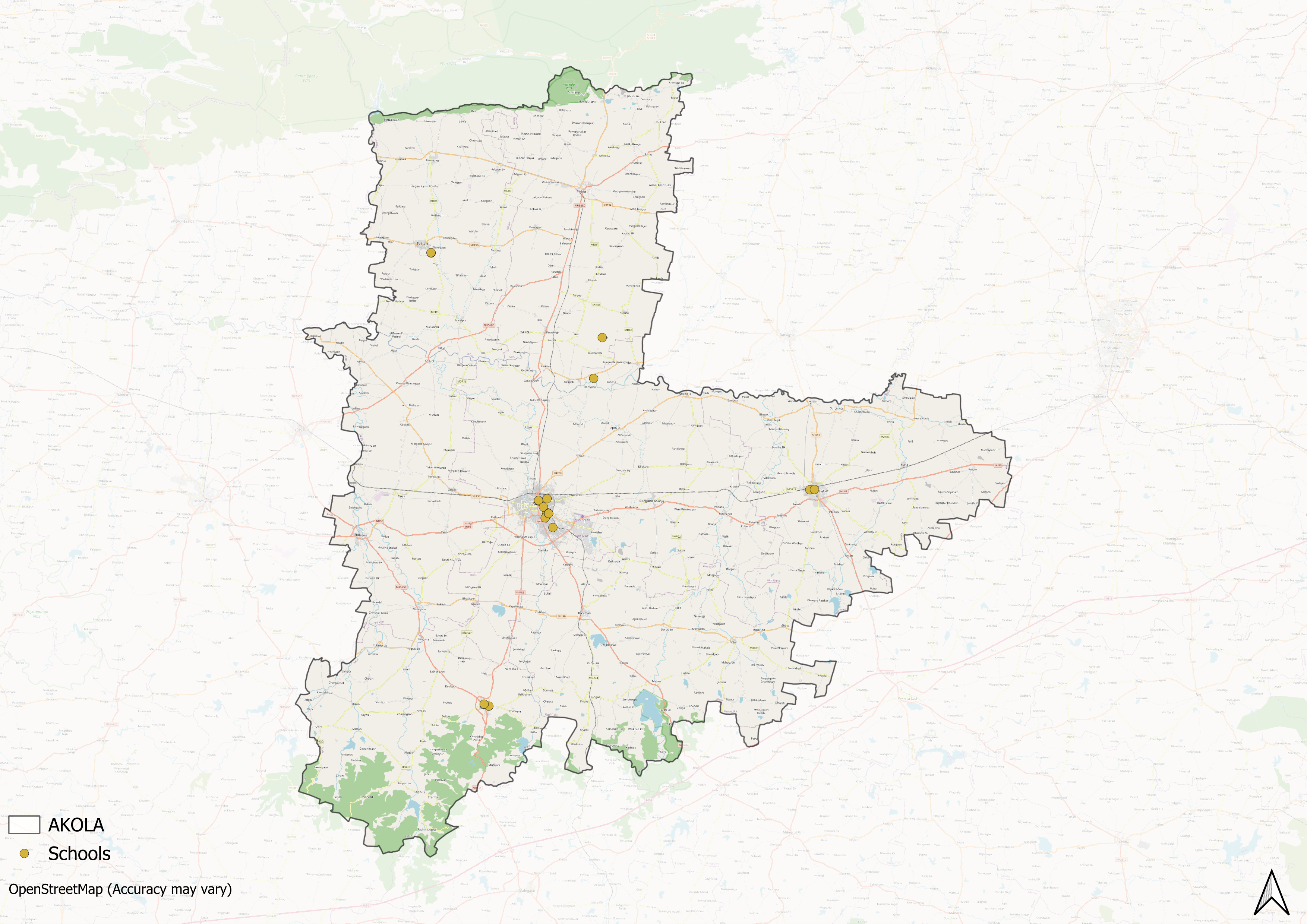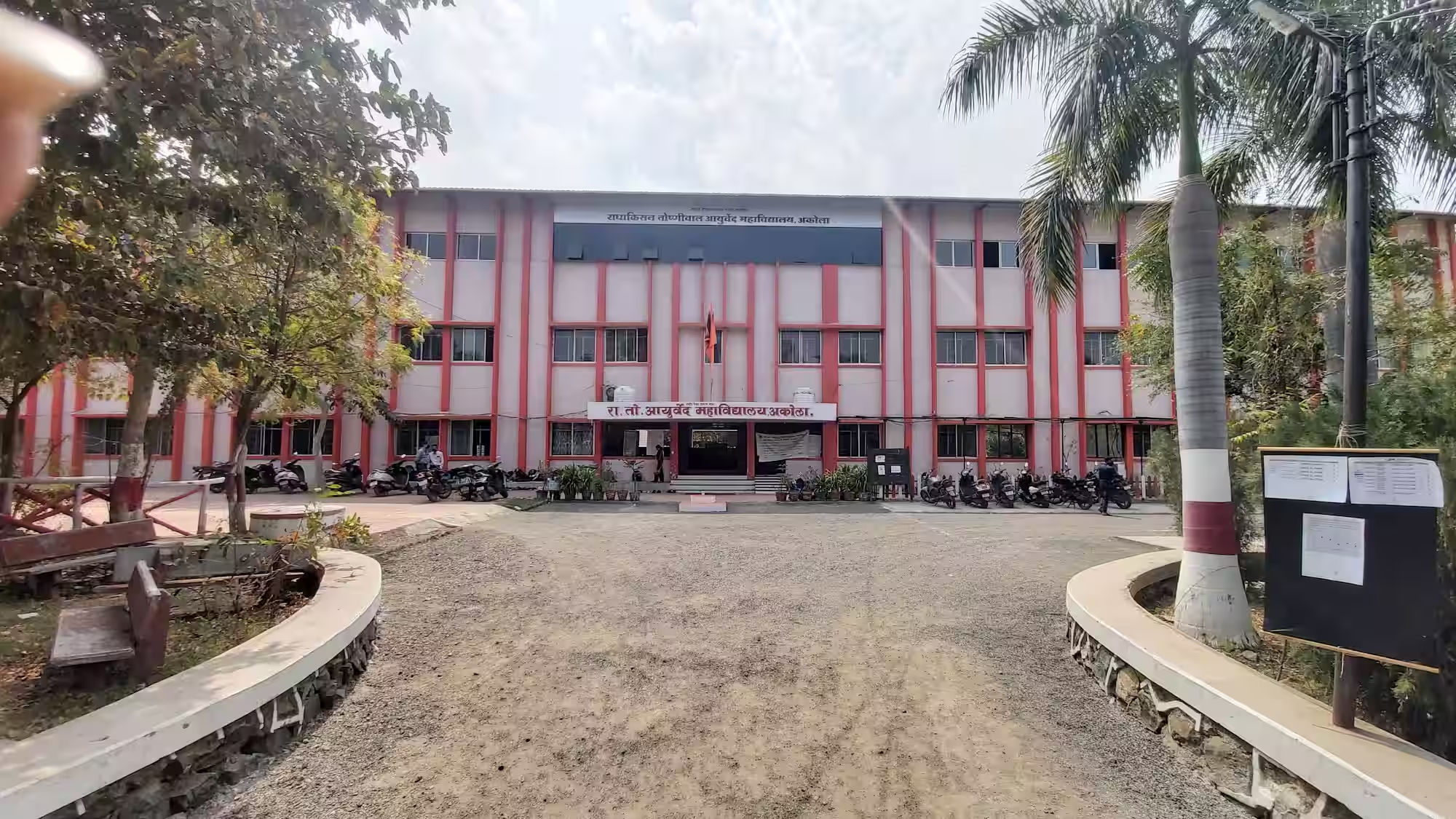Contents
- Early History
- Colonial Period
- Local Figures & Organizations
- Berar Education Society
- Post-Independence Era and Contemporary Educational Infrastructure
- Primary & Secondary Education
- Institutions of Higher Learning
- Radhakisan Toshniwal Ayurved Mahavidyalaya
- Dr. Panjabrao Deshmukh Krishi Vidyapeeth
- Shri Shivaji College of Arts, Commerce & Science
- NGOs and Community-Based Education Efforts
- Ekvira Foundation
- Graphs
- Enrollment and Dropout Rate
- A. Student Enrollment Numbers
- B. Student Enrollment (Class-Wise)
- C. Student Enrollment (Gender-Wise)
- D. Student Enrollment (By School Management Type)
- E. Drop Out Rate (By Schooling Level)
- F. Drop Out Rate (By Gender)
- Schools
- A. No. of Schools
- B. No. of Schools (Filtered by Gender Mix)
- C. No. of Schools (By School Management Type)
- Teachers
- A. No. of Teachers
- B. No. of Teachers (By School Management Type)
- C. No. of Teachers (Male vs Female)
- D. Education Level of Teachers
- Sources
AKOLA
Education
Last updated on 9 July 2025. Help us improve the information on this page by clicking on suggest edits or writing to us.
The educational framework of Akola aligns with the broader structure of the Indian education system, encompassing pre-primary, primary, secondary, and higher education. However, its history extends well beyond this contemporary structure. Interestingly, presence of caves in Patur linked to Buddhist Viharas and the district’s location within Dandakarya, a region regarded to be home to many learning centers, suggest that some systems of education did exist here in the earlier times.
By the 19th century, however, this changed with the introduction of the Western education framework in the district. British administrators and missionaries became actively involved in shaping education in the region. Still, even as colonial influences grew, the early 20th century saw a wave of local initiatives; its existence indicated an increasing public awareness regarding the importance of education. Local communities took charge of education, a movement that carried into the post-independence era, shaping the district’s educational landscape in lasting ways.
Early History
The documented history of education in Akola can be traced back to the 19th century. Prior to this era, information about educational centers in the district was sparse due to limited historical records. However, this does not imply that formal education was completely absent in the district. In ancient times, the district Gazetteer (1977) notes that Akola was part of Dandakaranya region, which was known for various ashrams that served as centers of education. This suggests that some form of education was likely available to the local population in earlier times.
One notable site that is tied to the district’s educational and religious past is the Patur Caves, located east of the town of Patur. Local tradition holds that these caves were used for meditation and penance by Rishi Parashar, who is credited with composing the Vishnu Purana (which is regarded as one of the earliest Puranas to ever be written). Other than this, the Gazetteer (1977) records the caves to be “Buddhist and Jain monasteries [that] came to be established during the reign of Ila (इल्), the Jain king who ruled the area around 1058. It is said that it is a Jam Chaityavihara.” It is important to note that Buddhism, aside from being a religion, historically played a significant role as a system of education in ancient India. R. Sharma et al. in the History of Education in India (1996) write that “Buddhist education and learning centred round monasteries… [and] the history of education in Buddha period is interrelated with the history of monasteries and ‘Viharas’ because there were no independent educational institutions or centres, other than those religious centres.” Jainism followed a similar system. This indicates that some system of education existed in the district during the ancient times.

Colonial Period
By the 19th century, the introduction of the Western education framework brought significant changes to the district, as British administrators and missionaries became actively involved in shaping its educational landscape.
In Akola district, a variety of educational institutions were noted to be established to cater to the local population. At the time when the Central Provinces and Berar District Gazetteers, Akola District was written (1910), it is recorded that “a Government high school and a training school and Anglo-vernacular school [were] maintained at Akola together with five municipal schools.” Anglo-vernacular schools were also opened at all tahsil headquarters, and the District Board oversaw primary schools in smaller towns and villages. Notably, girl’s schools were said to have been run previously by local bodies before being taken over by the Government.
Additionally, a missionary called the American Alliance Mission operated a small industrial school in Akola that offered training in carpentry and related trades. By 1910, a total of 240 schools were recorded to be present in the district and it appears that there was a growing demand for education here. As noted at the time, “education is popular and most schools lack sufficient accommodation.”

In addition to the various types of schools established in Akola district, boarding schools also seem to have been constructed in the later years. One such school, located in Patur, is estimated by locals to date back to 1924.
Local Figures & Organizations
While Western entities played a significant role in shaping Akola’s educational landscape, local figures and organizations also emerged as key contributors. Indian leaders and reformers established institutions that continue to shape education in the district today, alongside community-led organizations that have played a lasting role in its development.
Berar Education Society
The Berar Education Society was established on 14 January 1935, marking a significant development in the educational landscape of Akola, Maharashtra. The society first launched a school named Modern School, which was later renamed N.M. Chaudhary Vidyalaya.
In 1937, the society expanded its efforts by founding Berar Arts College, which was renamed Sitabai Arts College the following year in honor of its benefactor. This was a notable development, as records from various district Gazetteers indicate that institutions offering higher education were relatively uncommon in many districts of Maharashtra during that period.

To improve access to education in rural areas, the society established Kisanlal Nathmal College of Arts and Commerce at Karanja (LAD) in the early 1960s. Over the years, the Berar Education Society has continued to broaden its academic offerings to include disciplines such as law, commerce, and science. Through these initiatives, it has played a significant role in expanding educational opportunities and supporting community development in the region from colonial to post-Independence times.
Post-Independence Era and Contemporary Educational Infrastructure
Following India's independence, the education system in the district underwent major transformations, driven by both state policies and local leadership. The introduction of structured education levels: pre-primary, primary, secondary, and higher education were along with the implementation of National Education Policies, heavily shaped Akola’s educational landscape. Over the years, the sector expanded with contributions from both government-funded institutions and private organizations. Additionally, the introduction of various educational boards, each offering distinct curricula and standards, provided students with more choices and opportunities.
Primary & Secondary Education
During the colonial period, both public and private efforts in education primarily focused on primary and secondary schooling, as indicated by data from district Gazetteers across Maharashtra. Higher education remained underdeveloped in most districts, including Akola, with gradual improvements over time. While basic infrastructure for primary and secondary education existed, its expansion was closely tied to increasing enrollment and greater involvement of local figures.

Today, this expansion is evident in the widespread presence of schools across various wards of Akola, with available data reflecting the steady growth of educational institutions in both urban and rural parts of the district.
Institutions of Higher Learning
As mentioned above, perhaps one of the most notable changes in Akola’s educational landscape is tied to the establishment of higher education institutions. While primary and secondary schooling expanded steadily, opportunities for advanced education remained limited for much of the district’s history. Over time, local leaders and organizations played a crucial role in addressing this gap, leading to the creation of several colleges. As a result, many institutions in the district today are privately managed, semi-private, or autonomous
Radhakisan Toshniwal Ayurved Mahavidyalaya
Radhakisan Toshniwal Ayurved Mahavidyalaya, situated in the Gudhadi area of Akola was established in 1955 by the Rashtriya Vaidyak Prasarak Mandal. The institute appears to be of much importance as it is regarded to be among the oldest Ayurvedic colleges in the Vidarbha region.

The college offers undergraduate and postgraduate courses in Ayurveda and includes departments such as Kaumarbhritya (pediatrics) and Panchakarma (detoxification therapies).
Dr. Panjabrao Deshmukh Krishi Vidyapeeth
Dr. Panjabrao Deshmukh Krishi Vidyapeeth is an agricultural university located in Akola, Maharashtra. It was established on 20 October 1969 and is named after Dr. Panjabrao Deshmukh, who served as India’s Minister of Agriculture and was a prominent figure from the Vidarbha region. Notably, the university’s jurisdiction covers eleven districts in Vidarbha.

The university’s main functions include agricultural education, research, and extension services. It is also involved in breeder and foundation seed programs. The main campus at Akola includes the College of Agriculture, College of Agricultural Engineering and Technology, College of Forestry, College of Horticulture, and a postgraduate institute.
Shri Shivaji College of Arts, Commerce & Science
Shri Shivaji College of Arts, Commerce & Science was established in 1963 under the guidance of Dr. Abasaheb Khedkar, then Rural Development Minister of Maharashtra. Operated by the Shivaji Education Society, the college initially offered courses in Arts and Commerce. The Faculty of Science was added in 1967. The college currently provides programs in Humanities, Home Science, Science and Technology, and Commerce.

Alongside these institutions, many more spaces for higher learning exist across the district, offering programmes in a range of fields. However, while one can see here that higher education opportunities have expanded since the post-independence days, geographic disparities appear to persist, with urban centers having better access to institutions compared to rural areas.
NGOs and Community-Based Education Efforts
Education has been a key driver of social reform, particularly in addressing inequality and expanding access to learning. While formal institutions provide structured education, many communities continue to face barriers due to poverty, social stigma, or lack of resources. To address these challenges, various organizations in Akola have focused on community-based education initiatives, with each working to tackle specific social challenges present in the district
Ekvira Foundation
The Ekvira Foundation was established in 2008 in Akola to support children with hearing impairments. Founded by Mrs. Suchita Bansod, the organization was inspired by her own experiences with her deaf son, motivating her to advocate for the deaf community and improve their access to education and support services.

Today, the foundation focuses on creating a nurturing environment for these children. Additionally, it provides counseling to parents, and health assistance to the children, and promotes their integration into mainstream schools.
Graphs
Enrollment and Dropout Rate
Schools
Teachers
Sources
C. Brown; A.E. Nelson, 1910. Central Provinces and Berar District Gazetteers, Akola District, volume A-descriptive. Calcutta: Baptist Press.
Ekvira Foundation. "About Us." Ekvira Foundation.https://www.ekvirafoundation.org/about-pag
Lok Sanvad. 2020. "Patur Cha Aitihasik Leni." Lok Sanvad.https://www.loksanvad.com/patur-chya-aitihas…
Maharashtra State Gazetteers. 1974. Akola District: Education History. Directorate of Government Printing, Stationery & Publications, Government of Maharashtra, Mumbai.
PDKV. "About Us." Dr. Panjabrao Deshmukh Krishi Vidyapeeth.https://www.pdkv.ac.in/?page_id=57
RN Sharma, RK Sharma. 1996. History of Education in India. Atlantic Publishers & Distributors, New Delhi.
RTAM. "About RTAM." Rajesh Tandon Ayurvedic Mahavidyalaya.https://rtam.edu.in/about/
Shivaji College. "About Us." Shivaji College, Akola.https://www.shivajiakola.ac.in/pages/aboutus…
SMT LRTCC. "BGE Society." SMT Laxmibai Radhakisan Toshniwal College of Commerce.https://www.smtlrtcc.org/bge-society.php
Last updated on 9 July 2025. Help us improve the information on this page by clicking on suggest edits or writing to us.